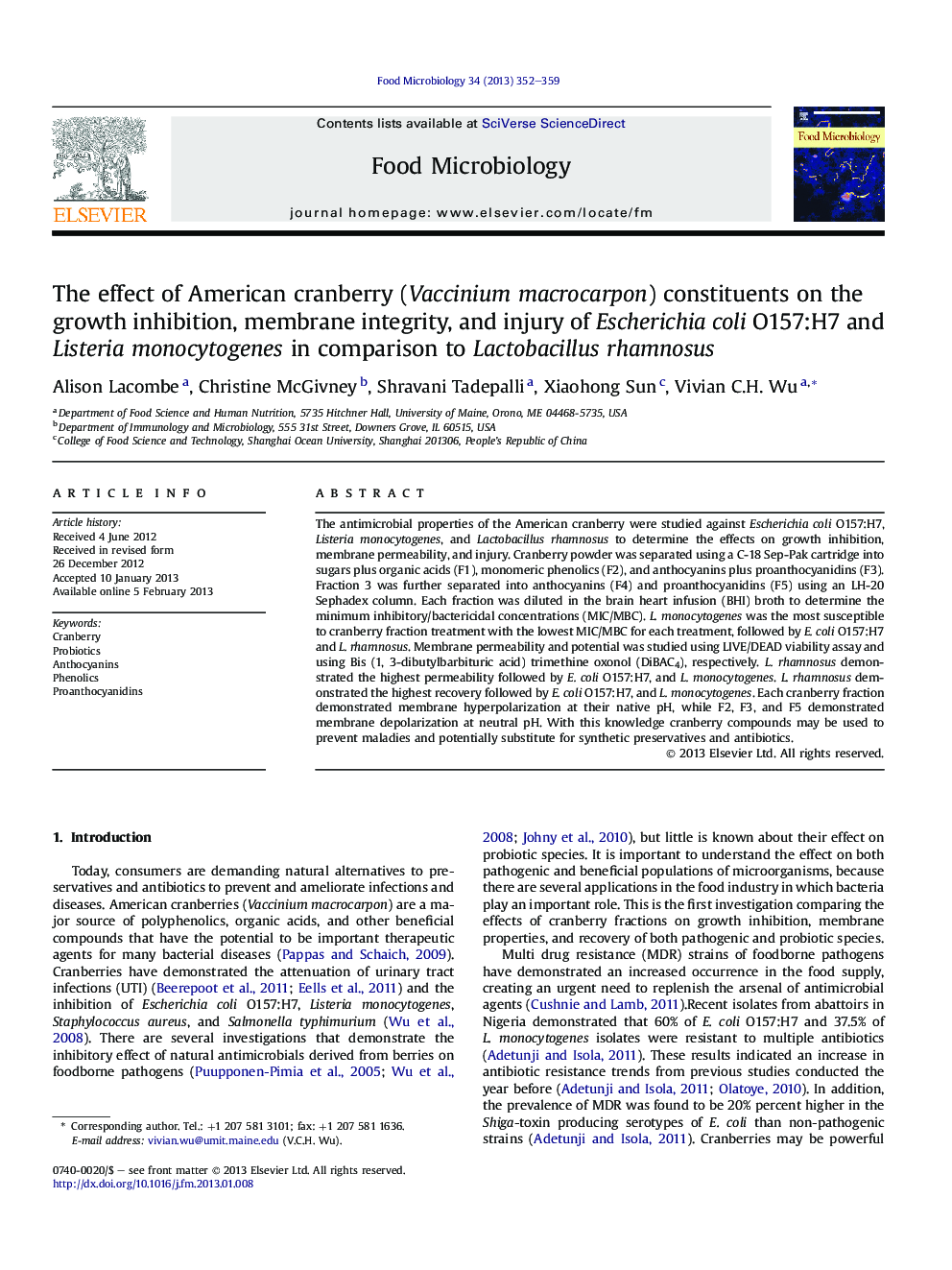| Article ID | Journal | Published Year | Pages | File Type |
|---|---|---|---|---|
| 6288947 | Food Microbiology | 2013 | 8 Pages |
The antimicrobial properties of the American cranberry were studied against Escherichia coli O157:H7, Listeria monocytogenes, and Lactobacillus rhamnosus to determine the effects on growth inhibition, membrane permeability, and injury. Cranberry powder was separated using a C-18 Sep-Pak cartridge into sugars plus organic acids (F1), monomeric phenolics (F2), and anthocyanins plus proanthocyanidins (F3). Fraction 3 was further separated into anthocyanins (F4) and proanthocyanidins (F5) using an LH-20 Sephadex column. Each fraction was diluted in the brain heart infusion (BHI) broth to determine the minimum inhibitory/bactericidal concentrations (MIC/MBC). L. monocytogenes was the most susceptible to cranberry fraction treatment with the lowest MIC/MBC for each treatment, followed by E. coli O157:H7 and L. rhamnosus. Membrane permeability and potential was studied using LIVE/DEAD viability assay and using Bis (1, 3-dibutylbarbituric acid) trimethine oxonol (DiBAC4), respectively. L. rhamnosus demonstrated the highest permeability followed by E. coli O157:H7, and L. monocytogenes. L. rhamnosus demonstrated the highest recovery followed by E. coli O157:H7, and L. monocytogenes. Each cranberry fraction demonstrated membrane hyperpolarization at their native pH, while F2, F3, and F5 demonstrated membrane depolarization at neutral pH. With this knowledge cranberry compounds may be used to prevent maladies and potentially substitute for synthetic preservatives and antibiotics.
⺠Listeria monocytogenes was the most susceptible to cranberry fraction. ⺠Lactobacillus rhamnosus demonstrated the highest permeability and recovery. ⺠Each cranberry fraction demonstrated membrane hyperpolarization at their native pH. ⺠Fraction 2, 3, and 5 demonstrated membrane depolarization at neutral pH.
